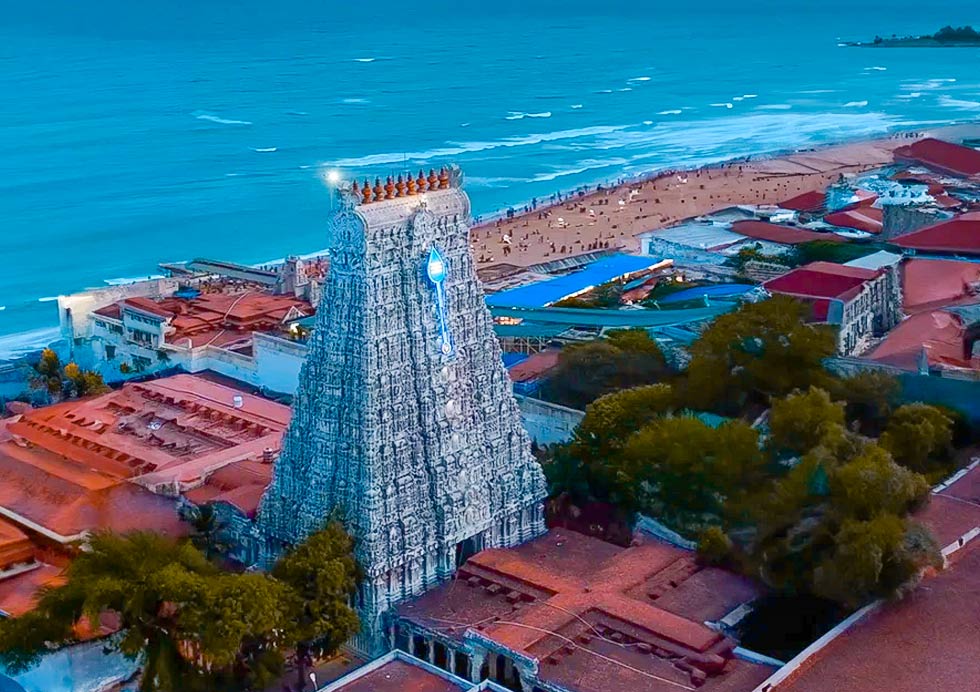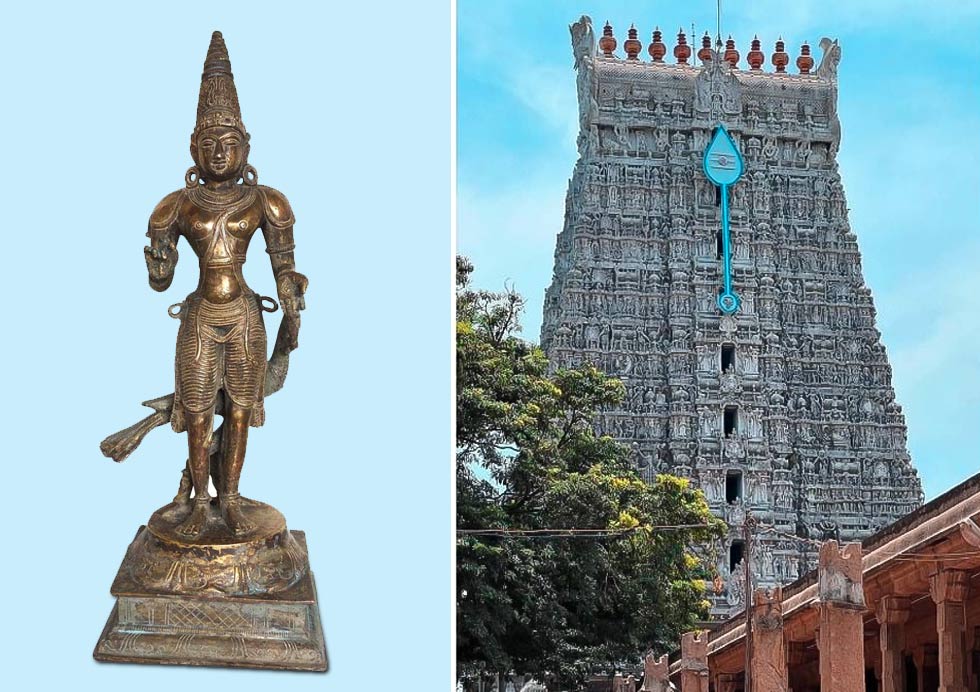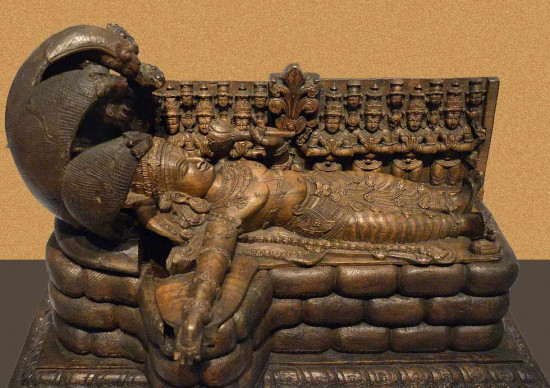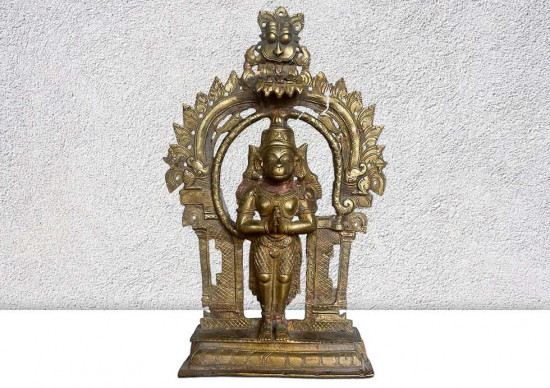
Thiruchendur Murugan Temple in the coastal city of Tiruchendur in Tamil Nadu. This temple is a beacon of Hindu spirituality and a testament to the rich cultural heritage of India. As one of the six sacred abodes of Lord Murugan, the Thiruchendur Murugan temple is of great importance to those who have volunteered around the world. Thiruchendur Murugan temple is dedicated to Lord Murugan, also known as Kartikeya, he is the Hindu God of War. He defeated Tarakasura the demon. Kartikeya is the son of Devi Parvati and Lord Shiva.

The Legend of Murugan's War with Surapadman
According to the Skanda Puranam, the Thiruchendur Murugan Temple stands as a testament to Lord Murugan's triumph over the demon king Surapadman. Legend has it that Surapadman, granted boons by Lord Shiva for his severe penance, became a tyrannical ruler, troubling the devas and imprisoning Indra, the king of the gods.
Indra sought the help of Murugan, who, after a fierce battle in Thiruchendur, defeated Surapadman's army, killing all but his son Iraniyan. Surapadman, hiding under the sea, was split into two by Murugan, transforming into the divine vehicles of the peacock and rooster.
The day of Surapadman's defeat is celebrated as Skanda Shasti in Murugan temples. Murugan, filled with gratitude, sought to honor Shiva by constructing a magnificent temple in Thiruchendur. The celestial architect Mayan, known for his divine craftsmanship, built the temple, which, due to its strategic location near the sea, became a hub for trade and commerce, further enhancing its influence.
A Glimpse into History

Thiruchendur Murugan Temple located on the beautiful coast of Tamil Nadu, India stands as a testament to the enduring power of devotion and rich cultural heritage of the region and its origin from the epic battle of Lord Murugan and the demon king Surapadman oath.
After defeating Surapadman, Lord Murugan, filled with gratitude, sought to honor his divine father, Shiva. The celestial architect Mayan, renowned for his divine craftsmanship, constructed the magnificent Thiruchendur Murugan Temple as a tribute to Murugan's victory.
Strategically located near the seashore, the temple's proximity to the sea made it a natural hub for trade and commerce, attracting people from far and wide. This accessibility contributed to its growing prominence and influence over the centuries.
Architectural Marvel
The Thiruchendur Murugan Temple, a testament to the architectural brilliance of ancient Tamil craftsmen, stands as a captivating example of South Indian temple architecture. The temple complex, spanning over 299 feet north to south and 213 feet east to west, is a sight to behold.
One of the most striking features of the temple is its towering seven-tier gopuram, reaching a height of 138 feet. This magnificent structure, adorned with intricate carvings and sculptures, serves as a grand entrance to the temple complex.
As visitors step through the gopuram, they are greeted by the Avast mandapam, a pillared hall that showcases the temple's architectural elegance. The mandapam features 124 intricately carved pillars, each a masterpiece of craftsmanship. The intricate details and symbolism carved into these pillars provide a glimpse into the religious and cultural beliefs of the people who built the temple.
The Thiruchendur Murugan Temple's architecture is a harmonious blend of tradition and innovation, reflecting the rich heritage of Tamil Nadu. It is a testament to the skill and dedication of the ancient artisans who created this masterpiece.
As visitors step through the gopuram, they are greeted by the Avast mandapam, a pillared hall that showcases the temple's architectural elegance. The mandapam features 124 intricately carved pillars, each a masterpiece of craftsmanship. The intricate details and symbolism carved into these pillars provide a glimpse into the religious and cultural beliefs of the people who built the temple.
The Thiruchendur Murugan Temple's architecture is a harmonious blend of tradition and innovation, reflecting the rich heritage of Tamil Nadu. It is a testament to the skill and dedication of the ancient artisans who created this masterpiece.
The Temple's Cultural Significance

The Thiruchendur Murugan Temple, beyond its architectural grandeur, serves as a vibrant center of cultural activity. For centuries, it has been a focal point for religious gatherings, festivals, and cultural expressions.
The temple's annual festival, Kanda Shasti, is a significant event that draws devotees from across India and beyond. This six-day celebration commemorates Lord Murugan's triumph over the demon king Surapadman. The festival is marked by a series of colorful processions, religious rituals, and cultural performances that showcase the rich traditions and customs of the region.
One of the highlights of the Kanda Shasti festival is the reenactment of the epic battle between Lord Murugan and Surapadman. This dramatic performance, known as "Surasamharam," captivates devotees and visitors alike. The festival also features traditional dance and music performances, reflecting the diverse cultural heritage of Tamil Nadu.
Throughout the year, the Thiruchendur Murugan Temple hosts various other religious and cultural events. These gatherings provide opportunities for devotees to connect with each other, exchange ideas, and strengthen their faith. The temple's vibrant atmosphere and the devotion of its people contribute to its enduring cultural significance.
The temple's annual festival, Kanda Shasti, is a significant event that draws devotees from across India and beyond. This six-day celebration commemorates Lord Murugan's triumph over the demon king Surapadman. The festival is marked by a series of colorful processions, religious rituals, and cultural performances that showcase the rich traditions and customs of the region.
One of the highlights of the Kanda Shasti festival is the reenactment of the epic battle between Lord Murugan and Surapadman. This dramatic performance, known as "Surasamharam," captivates devotees and visitors alike. The festival also features traditional dance and music performances, reflecting the diverse cultural heritage of Tamil Nadu.
Throughout the year, the Thiruchendur Murugan Temple hosts various other religious and cultural events. These gatherings provide opportunities for devotees to connect with each other, exchange ideas, and strengthen their faith. The temple's vibrant atmosphere and the devotion of its people contribute to its enduring cultural significance.
The Dutch Occupation
During the colonial era, the Thiruchendur Murugan Temple faced a significant disruption when it was occupied by the Dutch East India Company from 1646 to 1648. This period marked a challenging time for the temple and its devotees as the Dutch sought to assert their control over the region.
The Dutch occupation had a profound impact on the temple's religious activities. Their presence and influence led to changes in the temple's administration and practices. Devotees faced challenges in maintaining their traditional rituals and customs under foreign rule.
Despite the difficulties posed by the Dutch occupation, the Thiruchendur Murugan Temple's cultural significance and the unwavering devotion of its people ensured its survival. The temple's enduring connection to Lord Murugan and its deep-rooted place in the hearts of the local community provided a source of resilience.
After the Dutch occupation, the temple gradually recovered and regained its prominence. The cultural significance of the temple and the devotion of its devotees played a crucial role in its restoration and revival. The temple's resilience and ability to withstand foreign influence serve as a testament to the enduring power of faith and tradition.
After the Dutch occupation, the temple gradually recovered and regained its prominence. The cultural significance of the temple and the devotion of its devotees played a crucial role in its restoration and revival. The temple's resilience and ability to withstand foreign influence serve as a testament to the enduring power of faith and tradition.
Conclusion
The Thiruchendur Murugan Temple stands as a testament to the enduring power of faith and devotion. Its rich history, mythological significance, and architectural grandeur have made it a revered pilgrimage site for Hindus worldwide. The temple's enduring appeal lies in its ability to connect people to the divine and provide a sense of spiritual solace. As visitors explore the temple's sacred precincts, they can immerse themselves in a timeless tradition that has shaped the cultural landscape of South India for centuries.









